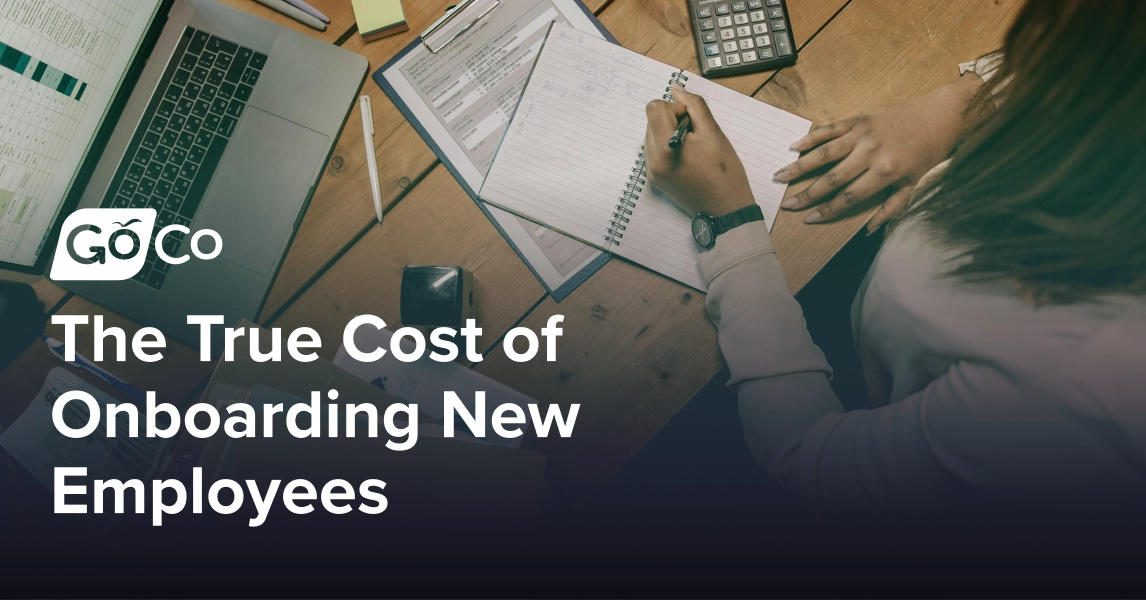The True Cost of Onboarding New Employees
Onboarding new employees is more expensive than you think…but it doesn’t have to be.
by Anna Coucke - March 25th, 2024
Bringing new talent into your organization is an exciting time that signifies growth, fresh perspectives, and the potential to achieve even greater things. But beyond the initial excitement of getting the offer letter signed lies the crucial process of onboarding.
An effective onboarding process can be the make-or-break factor that decides whether a new hire will stay with your organization for the long haul or will be looking for a quick way out.
In fact, an alarming 39% of new hires report that they will likely leave their new position within the first year. Good onboarding is key to new hire retention, with research from Brandon Hall Group finding that organizations with a strong onboarding process improve new hire retention by 82% and productivity by over 70%. However, many companies underestimate the true cost of onboarding.
So, just how much does onboarding cost?
While the cost of onboarding has many factors, the Society for Human Resource Management (SHRM) reports a staggering average cost-per-hire of $4,683 in the U.S. For executive positions, the cost skyrockets to an average of $28,329! This figure encompasses various aspects, but onboarding plays a major role. Let's take a closer look at what drives the cost of onboarding and how you can automate the process.
What Drives the High Cost of Onboarding?
These numbers highlight a critical truth: onboarding is an investment. But why the high cost? Let's dissect the key factors that contribute to the overall cost.
Lost Productivity
New hires need time to learn the ropes, navigate company systems, and adjust to their roles. During this period, existing team members often take on additional responsibilities, leading to a temporary dip in overall productivity. While this is unavoidable, including a planned transitionary period in the onboarding process can reduce disruption.
Training Costs
Developing and delivering effective training programs takes time, resources, and expertise. These costs can be particularly high for specialized roles. Developing custom training materials, hiring external trainers, and dedicating senior staff time all contribute to the costs associated with training.
Administrative Costs
The administrative tasks associated with onboarding can be surprisingly time-consuming and costly. Think about all the time spent on paperwork, equipment setup, benefits enrollment, and background checks, along with the costs and fees associated with initiating and then canceling them. The time and money spent on these processes can quickly add up, especially for organizations that still rely on manual processes.
Turnover
A poorly designed onboarding experience is a recipe for high turnover. New hires left feeling confused, unsupported, or disengaged are more likely to leave quickly. This, in turn, triggers a domino effect that forces you to re-invest in the entire hiring and onboarding process all over again.
When combined, these factors create a significant financial burden for organizations. However, the true cost of onboarding extends beyond the time and money spent on the onboarding process itself – it continues into long-term employment and productivity.
Why Does the Onboarding Experience Matter So Much?
Investing in a strong onboarding program goes far beyond the initial cost. Multiple studies have revealed the immense impact a positive onboarding experience has on employee engagement, productivity, and retention.
Let’s take a look at some key statistics that illustrate the long-term reach of a positive onboarding experience.
Increased Productivity
Good onboarding processes allow new hires to more quickly learn their tasks and responsibilities. Harvard Business Review found that new hires are 62% more productive at organizations with a standardized onboarding process, which translates to increased efficiency, faster project completion, and ultimately, higher business revenue.
Better Retention
Strong onboarding sets the stage for long-term success. Employees who feel valued and supported from the start are more likely to stay with the company for the long haul, with 69% of employees who experienced a good onboarding process sticking around for three years or more.
These statistics paint a clear picture: good onboarding is a long-term investment in your most valuable asset – your people. A positive experience makes an impact that reaches far beyond the first few months of employment; it fosters employee engagement and loyalty, and ultimately contributes significantly to your company's bottom line.
What Can You Do to Improve Your Onboarding Experience?
Now that we understand the importance and cost implications of onboarding, let's explore some practical strategies to improve your process.
Create a 90-Day Onboarding Plan
An effective onboarding plan goes beyond the first week. Create a 90-day onboarding plan that includes measurable goals and check-ins to evaluate performance, and allows new hires opportunities to bring up any confusion or concerns early.
Develop a Comprehensive Onboarding Checklist
A well-defined checklist ensures all essential tasks are covered from before the first day to the end of the onboarding period, including everything from paperwork completion and IT access setup to introductions, training modules, and performance reviews. Separating your onboarding items into three phases (preboarding, onboarding, and follow-up) makes the process easier to navigate.
For a step-by-step guide, check out our detailed Onboarding Checklist!
Personalize the Onboarding Experience
A one-size-fits-all approach doesn't work for onboarding. Be sure to tailor the onboarding experience to the specific role and needs of each new hire. New hires in marketing will have different learning requirements than those in engineering, for example.
Reducing Your Onboarding Costs through Automation
One of the most impactful strategies for reducing the high cost of onboarding is automating the process. This eliminates the costs associated with manual processes, paperwork, and errors while also saving time and streamlining onboarding for new hires and managers alike.
Beyond direct costs and time savings, an automated onboarding process is more easily personalized for each new hire, allowing them to feel better set up and empowered to succeed in their new role.
GoCo’s modern HR platform has a variety of features that make onboarding easy, efficient, and impactful for employees and managers alike, including:
Digitized onboarding documents and e-signatures
Self-service benefits enrollments
Customizable templates
Automating your HR processes makes a huge impact on cost savings that extend far beyond onboarding. Check out our ROI calculator to see just how much time and money your organization can save by investing in HR technology.
Ready to explore our platform for yourself? Take a tour today to learn more about how we can help you streamline your onboarding process and much more.
Ready to explore GoCo?
Check out our interactive Product Tour.
Take a Tour →Please fill your info to start experiencing GoCo
Recommended Posts
How HR Can Think Like a Marketer: Recruitment
Blog Articles
5 Reasons HR Deserves Better Tech
Blog Articles
Search...
Product
GoCo
Resources
Articles
eBooks
Webinars
Customer Stories






